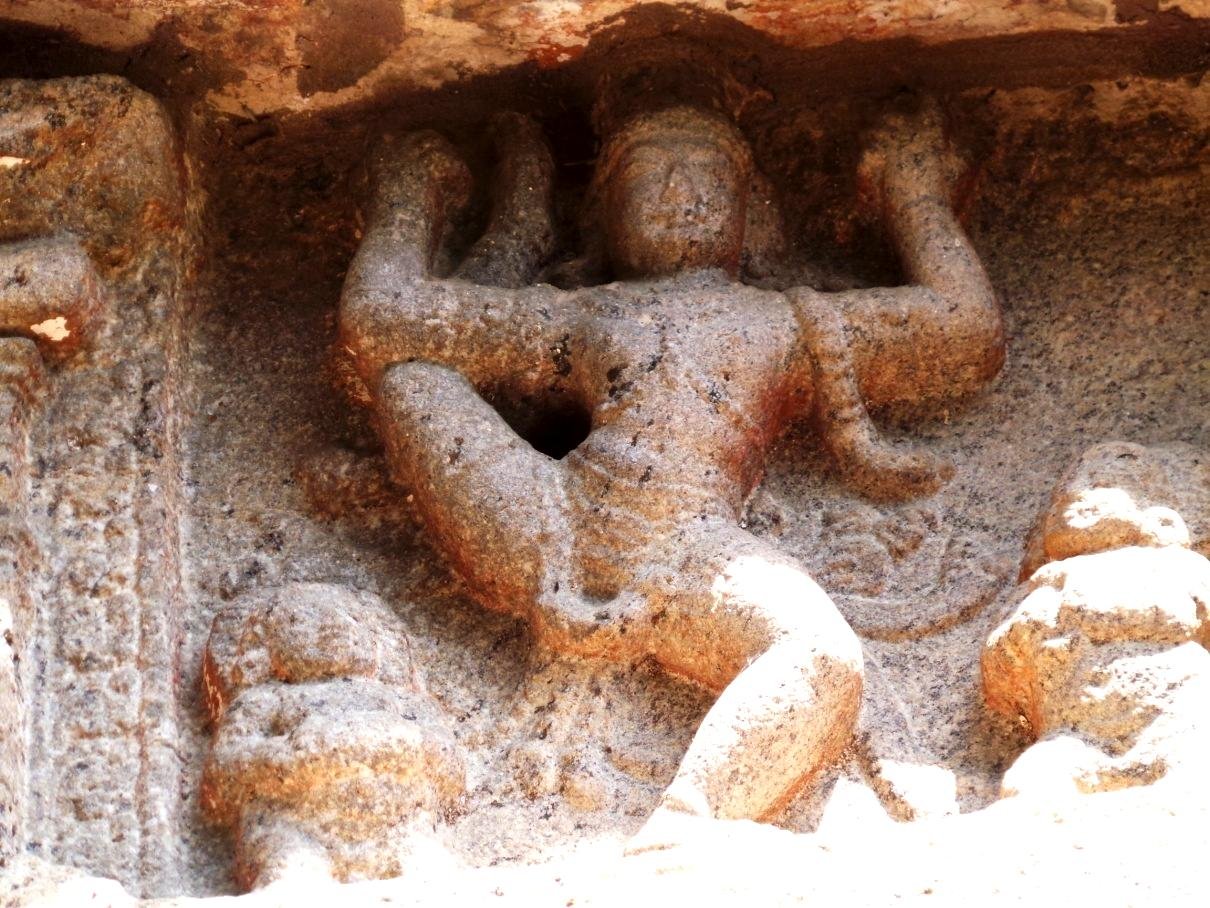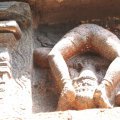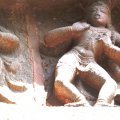Sculptures in temples in Kumbakonam: photo 67
Photo 67 of 640 in Gallery: Sculptures in temples in Kumbakonam

Image title: Figure 66. Vrscikakuttita Karana
Description of the photo
The left Pada is in Sama kept in Trysra, the left Jangha is in Nata and Ksipta, left Janu is in Ardhakuncita, Urah [uras] is in Udvahita, Siras is in Sama, right Pada is in Kuncita, right Jangha is in Parivrtta, right Janu is Unnata, right Uru is in Udvartana. The hands are in Alapallava raised up to the head level. The right leg is lifted as in Vrscika Karana
This fits into the description of Vrscikakuttitam [Vrscikakuttita] which is Karana 42 in which “The hands perform the Nikuttita movement and the legs assume Vrscika posture.” According to Sarngadeva, Nikuttita movement means “The hands in Alapallava gesture are moved up and down, one after the other, at the shoulders. This is used to indicate wonder and desire for aerial movement.”
The word Vrscika means a scorpion in Sanskrit. This word is probably used because of the bending of the leg backwards resembling the coiled tail of the scorpion. Bending the leg backwards to such an extent is really an acrobatic feet. But the Karana can be performed with different degrees of bending of the leg.
Gallery information:
Kumbakonam is considered as one of the holiest places in Tamil Nadu and is known for its temples and Mathas (monasteries which were centres of Brahmanical learning). These photographs depict the connection between the sculptures in the temples and Natya Shastra and related texts dealing with iconography.
Photo details:
High resolution:
Download file
Size: 202.12 KB
Resolution: 1210 x 908
© Copyright: see gallery source

